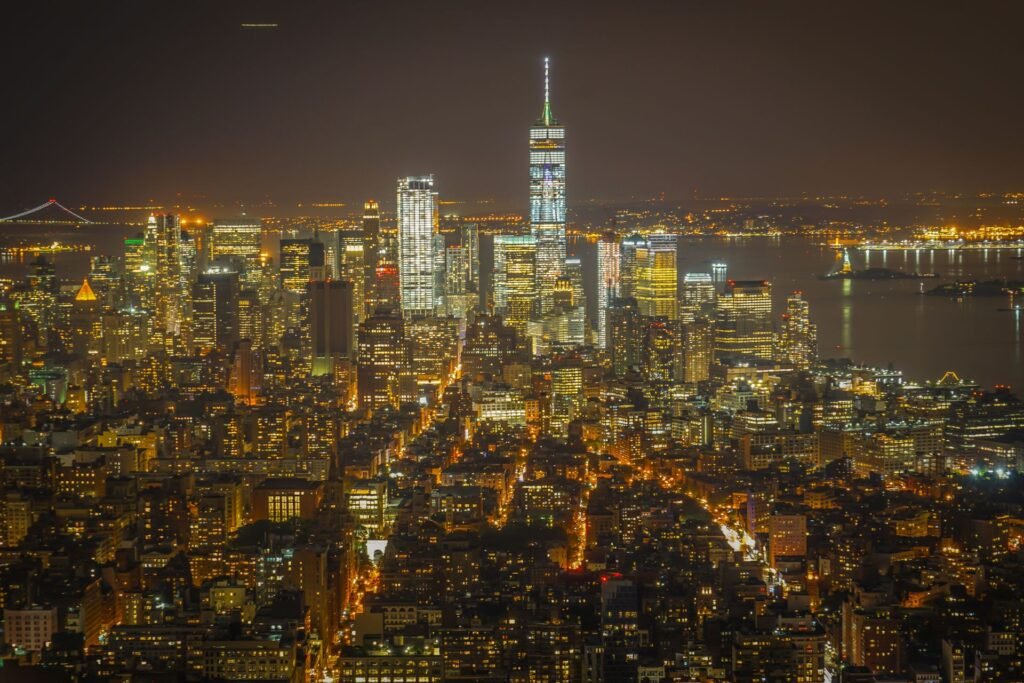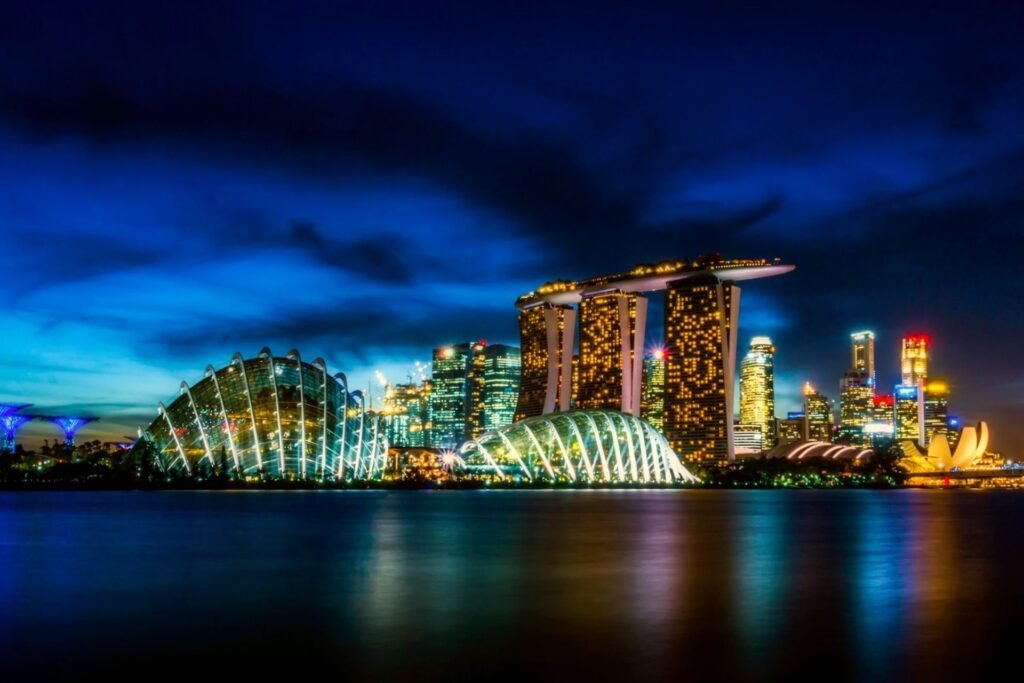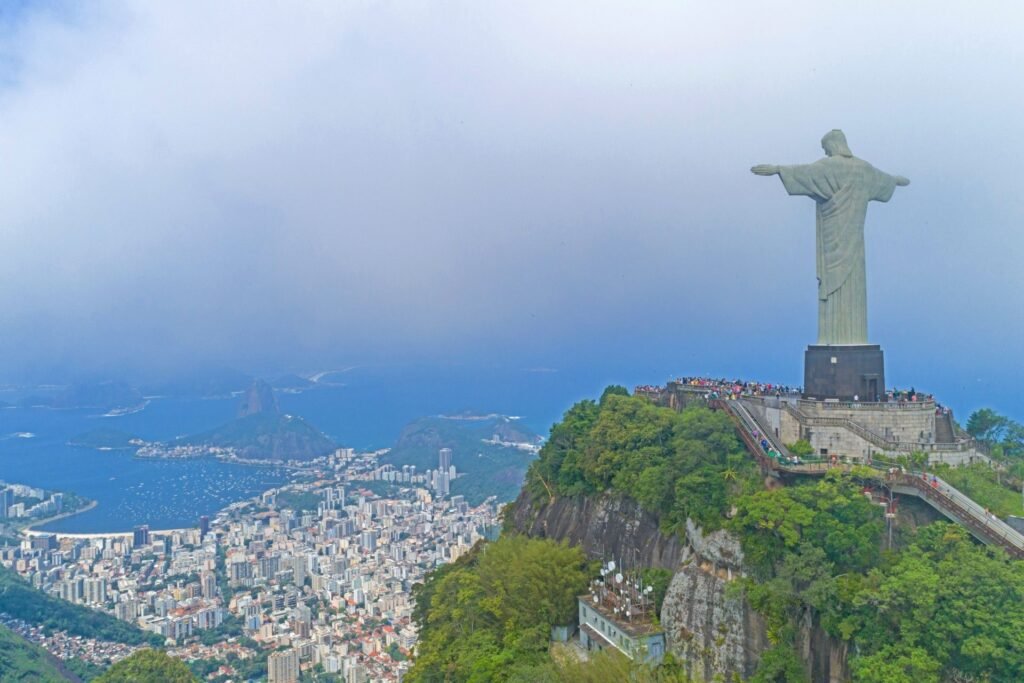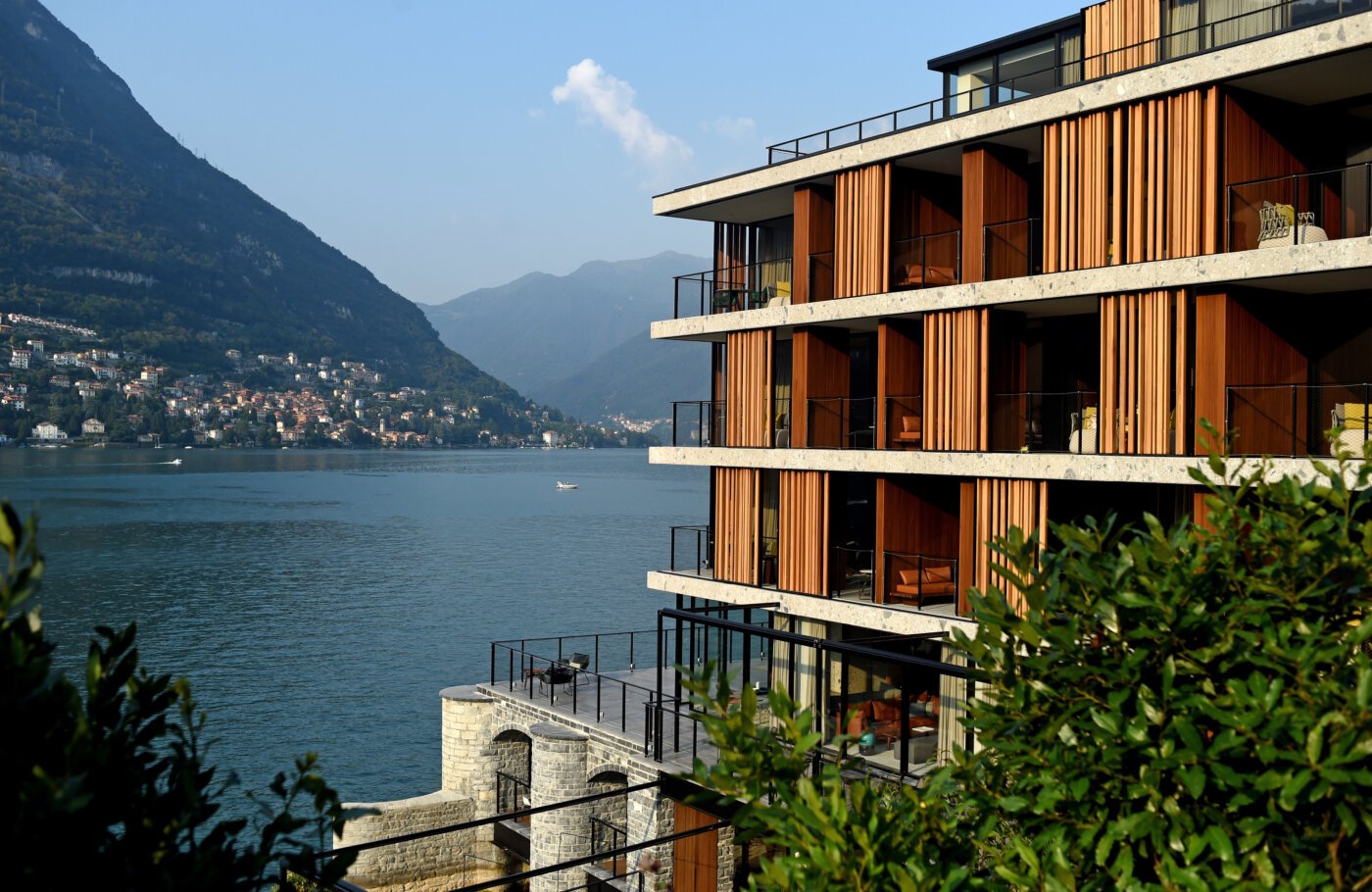These City Views Are Worth Every Step (And Every Dollar)
There’s something magical about seeing a city spread out below you like a living map. The chaos of street-level traffic transforms into ordered patterns, individual buildings merge into architectural symphonies, and the urban energy that can feel overwhelming at ground level reveals itself as beautiful complexity from above. The best city views don’t just offer pretty pictures – they provide completely new perspectives on places you thought you knew.
Some travelers skip observation decks and viewpoints, dismissing them as tourist traps or overpriced photo opportunities. But the right city views can be transformative experiences that change how you see urban environments forever. When you find that perfect vantage point where geography, architecture, and light combine perfectly, you understand why cities have captured human imagination for thousands of years.
The challenge isn’t finding elevated spots – it’s identifying the city viewpoints that deliver genuine awe rather than just altitude. The most memorable urban panoramas combine multiple elements: dramatic geography, distinctive architecture, interesting light conditions, and that indefinable sense of urban energy made visible. These views justify every step climbed and every dollar spent to reach them.
The Science of Spectacular City Views
What separates truly great city skyline views from merely high vantage points? The best urban observation decks leverage natural geography to create dramatic perspectives that reveal cities as integrated wholes rather than random collections of buildings. Cities built around water, mountains, or hills naturally create viewing opportunities that flat terrain simply cannot provide.
Light plays a crucial role in transforming good views into unforgettable ones. The golden hour before sunset and the blue hour after create lighting conditions that make ordinary city scenes look extraordinary. Evening views reveal urban energy through patterns of light and movement, while dawn perspectives show cities awakening with softer, more contemplative beauty.
Weather conditions can make or break panoramic city views. Clear days provide crisp detail and distant visibility, but partly cloudy skies often create more dramatic and photogenic conditions. Storm clouds, fog, and unusual atmospheric conditions can transform familiar city views into once-in-a-lifetime spectacles that no planning can guarantee.

Iconic Skylines That Define Cities
Hong Kong’s Victoria Peak delivers perhaps the world’s most famous city view, where skyscrapers rise directly from harbors against a backdrop of mountains and islands. The density and vertical scale of Hong Kong’s urban development creates a three-dimensional cityscape that looks almost fictional from above. The interplay between natural geography and human construction reaches its most dramatic expression here.
The Peak Tram journey adds to the experience, climbing at impossible angles through residential neighborhoods that cling to mountainsides. Multiple viewing platforms offer different perspectives, from the crowded but spectacular Sky Terrace to quieter spots that provide equally stunning views without the tourist crowds.
New York City from the Empire State Building remains the classic American urban vista despite competition from newer observation decks. The geometric precision of Manhattan’s street grid becomes beautifully apparent from this height, while Central Park creates a green interruption in the urban pattern that makes the surrounding development seem even more impressive.
The historical significance adds emotional weight to the visual impact. Standing where King Kong once battled biplanes creates connections between personal experience and cultural memory that newer viewpoints cannot match. The building itself becomes part of the experience rather than just a platform for viewing.
Hidden Gems and Secret Viewpoints
Sacré-Cœur in Paris offers more than just church architecture – it provides one of Europe’s most beautiful city views from steps that have served as impromptu theaters for generations of visitors. The elevation reveals Paris as a coherent urban design rather than a collection of famous landmarks, with Haussmanian boulevards creating visual lines that organize the metropolitan landscape.
The social atmosphere enhances the visual experience. Street musicians, portrait artists, and casual gatherings create community around the shared appreciation of urban beauty. This combination of spectacular views and vibrant street life makes the experience more memorable than sterile observation decks.
Arthur’s Seat in Edinburgh demonstrates how natural viewpoints can surpass constructed ones. This ancient volcano provides 360-degree views of Edinburgh, the Scottish countryside, and the North Sea, revealing how the city developed around and incorporated dramatic natural topography. The moderate hike required to reach the summit makes the panoramic city views feel earned rather than purchased.
The geological drama adds layers of meaning to the urban vista. Understanding that you’re standing on an extinct volcano while viewing a city built around similar geological features creates appreciation for the deep relationship between natural forces and human settlement patterns.

Modern Marvels: Engineering Spectacular Views
The Shard in London represents contemporary engineering applied to the ancient desire for elevated perspective. At 310 meters, it provides views across London that extend to the horizon in all directions, revealing the Thames as the organizing principle around which the city developed over two millennia.
The modern design of the viewing areas maximizes the visual experience through floor-to-ceiling windows and strategic layout that prevents crowding from interfering with photography and contemplation. Advanced elevator technology makes the ascent part of the entertainment rather than just transportation.
Singapore’s Marina Bay Sands SkyPark creates an infinity pool experience 200 meters above the city, combining luxury with spectacular urban observation decks. The view encompasses Singapore’s impressive skyline, busy harbor, and the geometric patterns of urban planning that make this city-state function so efficiently.
The engineering marvel of the building itself becomes part of the viewing experience. Understanding the structural innovations required to create a pool at this height adds appreciation for both human engineering capabilities and the urban development that such capabilities make possible.
Budget-Friendly Views That Rival Expensive Options
Not all rooftop city views require expensive admission fees. The Staten Island Ferry in New York provides free views of Manhattan’s skyline that rival expensive helicopter tours. The 25-minute journey offers constantly changing perspectives as the ferry moves through New York Harbor, creating dynamic urban panoramas that stationary viewpoints cannot match.
The ferry experience combines urban viewing with maritime history, passing close to the Statue of Liberty and Ellis Island while providing excellent photographic opportunities. The democratic accessibility of this experience – available to anyone regardless of budget – makes it particularly special.
Primrose Hill in London offers free panoramic views of the city center that many visitors never discover. This elevated park provides unobstructed sightlines across London’s diverse architectural landscape, from historic landmarks to modern developments, all framed by the natural beauty of the park itself.
The residential neighborhood setting creates authentic London atmosphere that tourist-focused observation decks cannot provide. Walking through Primrose Hill village to reach the viewpoint adds cultural context that enhances the visual experience.
Natural Viewpoints That Frame Urban Beauty
Table Mountain in Cape Town provides city views that demonstrate the dramatic relationship between urban development and natural geography. Cape Town spreads between mountain and ocean in patterns determined by topography, creating one of the world’s most naturally beautiful urban settings.
The cable car journey up Table Mountain becomes part of the experience, offering changing perspectives during the ascent. Multiple viewing areas accommodate different interests, from photography enthusiasts seeking perfect angles to families enjoying picnic areas with spectacular backdrops.
Mount Royal in Montreal shows how cities can incorporate natural viewpoints into urban design. Frederick Law Olmsted designed the park to preserve this natural observation deck while making it accessible to city residents and visitors through thoughtful landscape architecture.
The seasonal variations in Montreal’s climate create dramatically different viewing experiences throughout the year. Winter snow transforms the urban landscape below, while autumn colors in the park foreground create stunning contrasts with the metropolitan skyline.
Timing Your Visit for Maximum Impact
The best city views often depend more on timing than location. Dawn visits to urban observation decks provide soft light and minimal crowds, creating contemplative experiences that busy daytime periods cannot match. Cities look different in morning light – cleaner, more peaceful, full of potential rather than energy.
Sunset views offer classic urban photography opportunities, but the hour after sunset often provides even more spectacular city skyline views. City lights begin appearing while enough natural light remains to show architectural detail, creating the perfect balance between artificial and natural illumination.
Weather apps become essential tools for planning city viewing experiences. Cloud cover, visibility conditions, and precipitation forecasts help determine the best times to visit expensive observation decks or climb challenging natural viewpoints.
Photography and Memory Making
Great panoramic city views create natural photography opportunities, but the most memorable experiences often happen when you put the camera down and simply absorb the visual spectacle. The human eye processes urban landscapes differently than cameras, capturing movement, depth, and atmosphere that photos cannot fully reproduce.
Consider spending extended time at spectacular viewpoints rather than just taking quick photos. Urban landscapes change constantly as light shifts, weather moves through, and city life creates different patterns of activity. These changes become apparent only through patient observation.
Sharing viewing experiences enhances their impact. City views provide natural conversation starters and bonding opportunities that create lasting memories beyond the visual spectacle. Many people report that discussions held while enjoying great urban vistas become as memorable as the views themselves.
The Economics of Elevation
Expensive observation decks often provide amenities that justify their costs: professional-quality viewing areas, climate control, restrooms, food service, and crowd management that ensures everyone gets good views. These facilities can transform viewing experiences from endurance tests into comfortable entertainment.
However, many of the world’s best city views require nothing more than the energy to climb stairs or hike trails. Free natural viewpoints often provide more authentic experiences and better photographic opportunities than commercialized alternatives.
Consider the total experience when evaluating costs. An expensive rooftop bar with mediocre views might provide less value than a moderately priced observation deck with spectacular panoramas and educational information about the city below.

Cities That Exist for Their Views
Some cities seem designed specifically to be viewed from above. San Francisco’s hills create natural amphitheaters that showcase the city’s relationship with bay, bridges, and fog in ways that flat cities cannot match. Each elevated neighborhood provides different perspectives on this uniquely vertical urban environment.
Rio de Janeiro combines urban development with natural beauty in patterns that seem almost too perfect to be real. Views from Sugarloaf Mountain or Christ the Redeemer statue reveal how the city wraps around mountains, beaches, and bays in organic curves that follow natural topography.
Istanbul’s position straddling continents creates urban vistas that encompass both European and Asian shores, connected by bridges spanning the Bosphorus. Historical layers become visible from elevation, with Ottoman mosques, Byzantine ruins, and modern developments creating visual timelines across the metropolitan landscape.
Making Views Worth the Investment
The best city views transform urban experience rather than just providing photo opportunities. When you see how cities organize themselves around geography, understand the relationships between different neighborhoods, and appreciate the scale of human urban achievement, the experience changes how you navigate and understand cities everywhere.
Choose viewpoints that reveal something meaningful about the cities you’re visiting. The best urban observation decks provide educational context that helps interpret what you’re seeing, transforming visual spectacle into cultural understanding.
Remember that great city skyline views often require patience and planning, but they reward both with experiences that remain vivid long after other travel memories fade. When you find that perfect combination of elevation, light, and urban beauty, you understand why humans have always been drawn to high places for perspective on the world below.
If you liked this article, check the other ones on Majestic Mondo website. Consider joining the Instagram community as well, to fully enjoy the beauty of our planet.




Leave a Reply